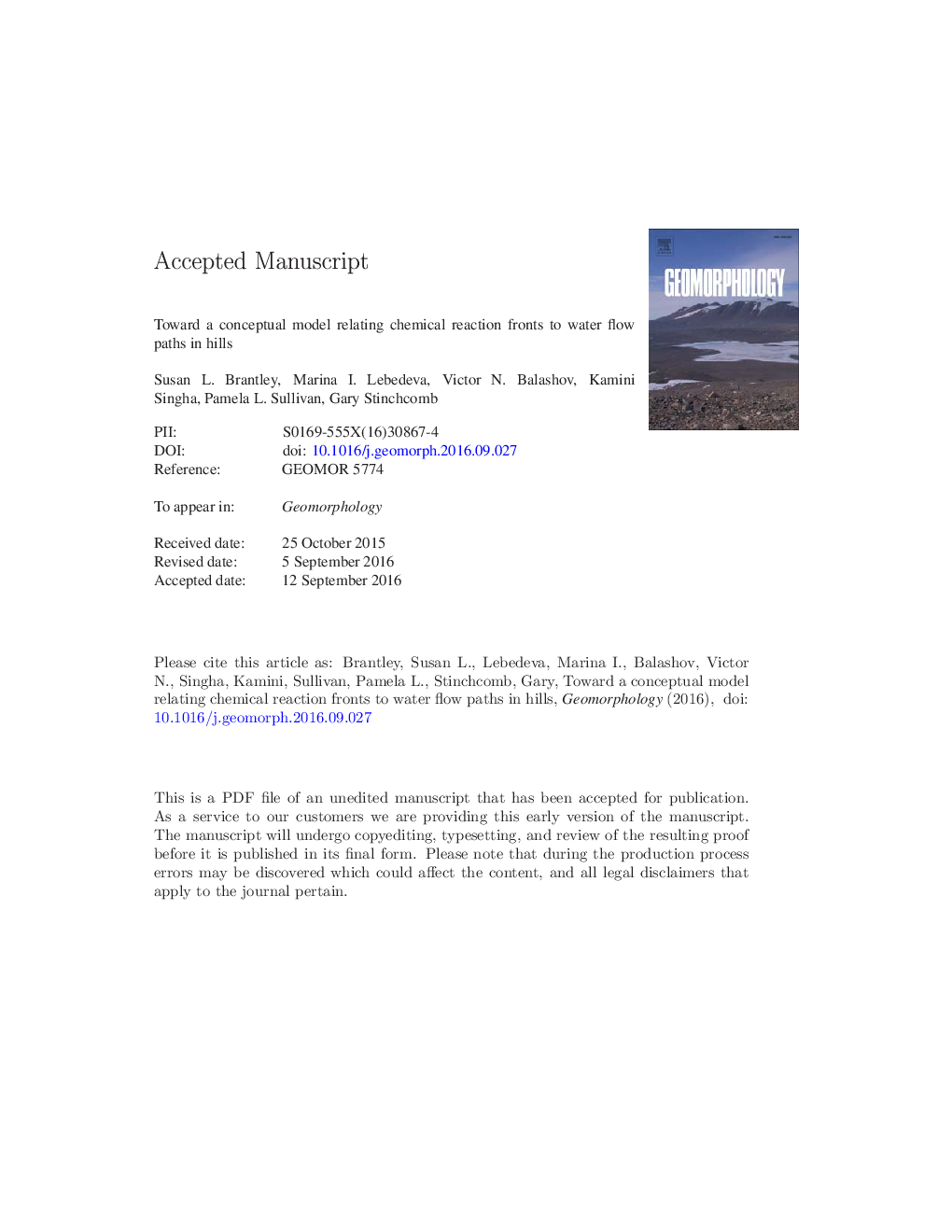| کد مقاله | کد نشریه | سال انتشار | مقاله انگلیسی | نسخه تمام متن |
|---|---|---|---|---|
| 5781139 | 1635372 | 2017 | 81 صفحه PDF | دانلود رایگان |
عنوان انگلیسی مقاله ISI
Toward a conceptual model relating chemical reaction fronts to water flow paths in hills
ترجمه فارسی عنوان
به یک مدل مفهومی مربوط به جبهه واکنش شیمیایی به مسیرهای جریان آب در تپه ها
دانلود مقاله + سفارش ترجمه
دانلود مقاله ISI انگلیسی
رایگان برای ایرانیان
کلمات کلیدی
موضوعات مرتبط
مهندسی و علوم پایه
علوم زمین و سیارات
فرآیندهای سطح زمین
چکیده انگلیسی
Both vertical and lateral flows of rock and water occur within eroding hills. Specifically, when considered over geological timeframes, rock advects vertically upward under hilltops in landscapes experiencing uplift and erosion. Once rock particles reach the land surface, they move laterally and down the hillslope because of erosion. At much shorter timescales, meteoric water moves vertically downward until it reaches the regional water table and then moves laterally as groundwater flow. Water can also flow laterally in the shallow subsurface as interflow in zones of permeability contrast. Interflow can be perched or can occur during periods of a high regional water table. The depths of these deep and shallow water tables in hills fluctuate over time. The fluctuations drive biogeochemical reactions between water, CO2, O2, and minerals and these in turn drive fracturing. The depth intervals of water table fluctuation for interflow and groundwater flow are thus reaction fronts characterized by changes in composition, fracture density, porosity, and permeability. The shallow and deep reaction zones can separate over meters in felsic rocks. The zones act like valves that reorient downward unsaturated water flow into lateral saturated flow. The valves also reorient the upward advection of rock into lateral flow through solubilization. In particular, groundwater removes highly soluble, and interflow removes moderately soluble minerals. As rock and water moves through the system, hills may evolve toward a condition where the weathering advance rate, W, approaches the erosion rate, E. If WÂ =Â E, the slopes of the deep and shallow reaction zones and the hillsides must allow removal of the most soluble, moderately soluble, and least soluble minerals respectively. A permeability architecture thus emerges to partition each evolving hill into dissolved and particulate material fluxes as it approaches steady state.
ناشر
Database: Elsevier - ScienceDirect (ساینس دایرکت)
Journal: Geomorphology - Volume 277, 15 January 2017, Pages 100-117
Journal: Geomorphology - Volume 277, 15 January 2017, Pages 100-117
نویسندگان
Susan L. Brantley, Marina I. Lebedeva, Victor N. Balashov, Kamini Singha, Pamela L. Sullivan, Gary Stinchcomb,
